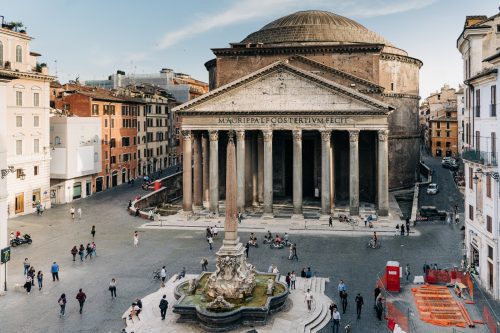A Quick Tip: Choosing the Right Lens
Today we have yet another quick tip from our friends over at Picture Correct and this one comes straight out of their best-selling Photo Tutorial eBook.
Do you know what makes a great photograph?
A great camera.
Just kidding, but we bet you’re paying attention now.

All joking aside, your camera is actually quite integral to the process of making a great photograph.
But every element is important including the lens and, since there isn’t a one-size-fits-all lens perfect for every situation, they have their own quirks, nuances, and drawbacks.
So the question is: Are you using the lens that is right for you?
Hear us out: This choice can actually have a big impact on not only how your camera sees the world, but also how it captures it. Thus your choice of lens in many ways is an artistic one. That’s why you should spend some time thinking about it.
Yet, to do that, you need to know how to think about lenses. We’re going to give you a quick rundown as well as some insights into what situations each one is best equipped to handle.
All of this information is right there in The Photo eBook.

You’ll learn in the opening chapters of The Photo eBook that there are basically five categories that cover pretty much every lens out there:
ULTRA WIDE ANGLE
These lenses fall between 12-18mm and can be quite expensive. The one advantage of this lens is that they mimic human eyesight better than any other with peripheral vision. Ideal for capturing landscapes and giving viewers the feeling of immersion, they are also more realistic than fisheye lenses that tend to distort and give an unrealistic view.
STANDARD WIDE ANGLE
These lenses fall between 20-35mm and tend to not be as glamorous as their ultra-wide brethren though still capable of producing immaculate landscapes and environmental captures. An awesome choice for beginners to photography, standard wide-angle lenses are cheaper, durable, and lightweight.
MID RANGE
Between 24-70mm, these lenses are awesomely versatile and are capable of attaining low apertures and a little something, something outside of the scope of your standard kit lens. They don’t have a very strong wide-angle or zoom, however.
MEDIUM TELEPHOTO
A lens between 70-300mm, these are great for small subjects such as flowers but not great for landscapes though they are quite useful at photographing subjects in the distance that would otherwise get lost in a wider angle lens.
SUPER TELEPHOTO
Any lens beyond 400mm, these behemoths are fragile as you can imagine and quite expensive. Reading between the lines, we don’t recommend these for beginners. They’re also quite restrictive when it comes to close subjects and require a far-off enough vantage point to work properly.
There you have it: The five basic types of lens that are available for your camera.

Now, back to you.
Look at your arsenal of lenses.
Do they seem somewhat different to you?
Before we let you go, we want you to take the time to get to know your equipment and how it can help prepare you to take the photos you want.
Not only will this prepare you to pursue and achieve your personal photography goals, but also it will help you get that much closer to true mastery of the field.
If you want more insights just like this, be sure to check out Picture Correct’s best-selling Photo Tutorial ebook!